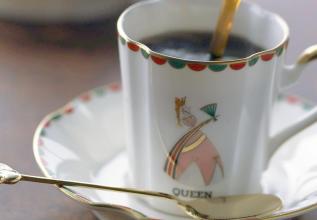Description of grindability and Flavor of Sun Yerga Shifeiwaka Coffee Variety Price introduction in Manor producing area
Because Yejia itself is mainly granulated adzuki beans, it is suitable for medium-shallow baking, after all, it is a native species, and it is impossible to be as uniform as beans exported in size from Central and South America. Yejia's grading is based on physical defects and cup test quality. So in fact, the size of the original beans is not the same, but now the size of Yejia on the market is surprisingly the same, but not big. Referring to the Sidamo Sun G3, you can actually know what the native species looks like, but you can also see the raw bean materials of bean merchants that write Yejia beans as Tibika. According to common sense, if the fruit is so sour, it should be bourbon.
As a well-deserved representative of the third wave of coffee, Yejia Xuefei is characterized by its easily identifiable flavor. Second, it is easy to show its characteristics when the a value is 55, which requires a deeper baking degree than the traditional Central and South American water-washed beans, and the suitable a value is about 25-40.
Yejassefi's coffee trees were planted by European monks (a bit like Belgian monks growing wheat to brew beer) and were later transferred to farmers or cooperatives. Yejia Chuefei is actually constructed by surrounding coffee communities or cooperatives, including Edido Idido, Hafusa Harfusa, Hama Hama and Biloya near Fog Valley Misty valley, all washed with water, but there are also a small number of off-product beans engraved with sun to enhance the charming fruit aroma and mellow thickness. These mountain villages are foggy, like spring all year round, with a gentle breeze in summer, cool but not hot, rain but not damp, and no cold damage in winter, giving birth to a unique regional flavor of citrus and flowers. Coffee trees are mostly planted in farmers' own backyard or mixed with other crops in the field, the yield per household is not much, it is a typical rural coffee. Yega Xuefei won the prize beans almost from the above-mentioned coffee villages and communities.
As for why, although some people like to use a chart to explain that the sour taste decreases and the bitterness increases as the baking temperature grows, the taste of the coffee and the beans themselves are actually wonderful things. It is not that the sour taste is gone and the rest is bitter, nor does it mean that the sour aroma substances are fixed. The chart does not tell us that these lost aromas can still be converted into other substances. The complexity of our oral senses is not drawn by a few lines in the picture.
Coffee bean is not only a kind of plant fruit, but also a kind of crop. The existence of Yejia Xuefei better explains the attribute that coffee is a fruit. The third wave of specialty coffee has been trying to interpret the regional flavor of coffee, as for this question, if you look at the counter-cultural coffee flavor wheel, nearly half of them have a description of the flavor of fruit. There are many features that people can think of as fruit at a glance, so I won't repeat them below. And the flavor of Yejia can be compared with the number of seats.

Important Notice :
前街咖啡 FrontStreet Coffee has moved to new addredd:
FrontStreet Coffee Address: 315,Donghua East Road,GuangZhou
Tel:020 38364473
- Prev

Full and round El Salvador Himalayan Coffee Flavor describes the characteristics of the manor producing area
Pacamara is the artificial breeding variety of Pacas and Maragogipe. It was first cultivated by researchers in El Salvador in 1958. Pacamara is an excellent variety under rare artificial breeding, which is better than blue, and perfectly inherits the advantages of the mother plant. It not only has the excellent taste of Pacas, but also inherits the large size of Maragogipe, and the bean body is at least like beans.
- Next

Description of flavor of Yega Chuefei Adoto Coffee with Glycol Flavor introduction of Price Variety by Grinding method
Yejia Xuefei, nearly 2,000 meters above sea level, is one of the highest coffee producing areas in the world. Here has been a wetland since ancient times, Yirga means to settle down, Cheffe means wetland, Lake Turkana, Lake Abaya, Lake Chamo bring rich water vapor here. The rift valley, represented by Misty valley, is foggy all the year round, like spring all the year round, with a gentle breeze.
Related
- Detailed explanation of Jadeite planting Land in Panamanian Jadeite Manor introduction to the grading system of Jadeite competitive bidding, Red bid, Green bid and Rose Summer
- Story of Coffee planting in Brenka region of Costa Rica Stonehenge Manor anaerobic heavy honey treatment of flavor mouth
- What's on the barrel of Blue Mountain Coffee beans?
- Can American coffee also pull flowers? How to use hot American style to pull out a good-looking pattern?
- Can you make a cold extract with coffee beans? What is the right proportion for cold-extracted coffee formula?
- Indonesian PWN Gold Mandrine Coffee Origin Features Flavor How to Chong? Mandolin coffee is American.
- A brief introduction to the flavor characteristics of Brazilian yellow bourbon coffee beans
- What is the effect of different water quality on the flavor of cold-extracted coffee? What kind of water is best for brewing coffee?
- Why do you think of Rose Summer whenever you mention Panamanian coffee?
- Introduction to the characteristics of authentic blue mountain coffee bean producing areas? What is the CIB Coffee Authority in Jamaica?

